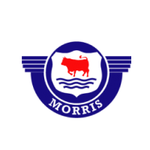Description
The Morris Cowley name was first used in 1915, being the second model launched (following the Oxford) not long after William Morris set up WRM Motors Ltd in 1912. The early years of manufacture made use of many bought-in components including engines from American suppliers. By 1919 however, the motive force was from the British-based arm of French manufacturer Hotchkiss – purchased by Morris in 1923, thus becoming Morris engines from that point on.
This generation of Cowley retained the unusual radiator shape first used on the Oxford model which gives these cars their distinctive appearance and is the source of their ‘Bullnose’ nickname. The Cowley at this point was the basic option of the two Morris models and available as an Open Two-Seater; Four door Tourer or Drophead Coupé.
Improved manufacturing methods and relatively low cost meant that by the mid-1920s, the ‘Bullnose’ Morris Oxfords and Cowleys were two of the most popular mid-sized cars in Britain, accounting for nearly half of all new cars in the country. Production of the ‘Bullnose’ models continued until September 1926, although the model names lived on – attached to cars with a more conventional ‘flat nose’ radiator, first shown in October of that year. It is thought that in excess of 150, 000 ‘Bullnose’ Oxfords and Cowleys were built.
First registered on 10 August 1926, we know relatively little of the history of this Morris Cowley Open Two-Seater - nothing until the 1970’s when it came into the ownership of a couple of long-term keepers in Wales, before passing to a Somerset-based vintage car enthusiast in 2021. Used for – amongst other things – charity fund-raising, it was then acquired by a Jersey based owner in 2022.
The car has clearly received much attention and restoration work in the not too distant past - to judge from its excellent appearance – but we have no record of how much work was carried out and when it was undertaken.
The engine used in this generation of Cowley was a 1500 cc, side-valve 4-cylinder, mated to a 3-speed gearbox. This produced around 27 bhp and endowed the car with a respectable top speed of around 50 mph. Acceleration is gentle, with around 30 seconds needed to reach 40 mph.
This car runs and drives very well, with stopping provided by rod and cable-operated drum brakes. Offering a true vintage driving experience, the brake pedal is on the right, clutch on the left and accelerator in the centre. No synchromesh for the gearbox, so double de-clutching technique is a must.
The body of the car is very smart and tidy – Maroon paintwork with black fenders in very good condition. The painted ‘artillery’ wheels likewise. The folding hood is fully functional and in good condition. The chassis is solid, sound and clearly well kept. All visible wood frame and panel work is in good shape.
The interior has been fully re-upholstered throughout (although we don’t know how long ago). The seats – including the folding dickey seat - and door panels are finished in a matching red and in excellent shape. The rubber floor matting looks little used. The simple wooden dashboard has clearly been refinished and is complete with period instrument and gauges.
A very popular and distinctive vintage motor car in excellent condition, ready to be paraded, used for club runs and displays. Obviously well restored in the past and still in very good shape throughout.
The car is currently Jersey registered and we can assist with shipping (worldwide) and importation processes if required.




















